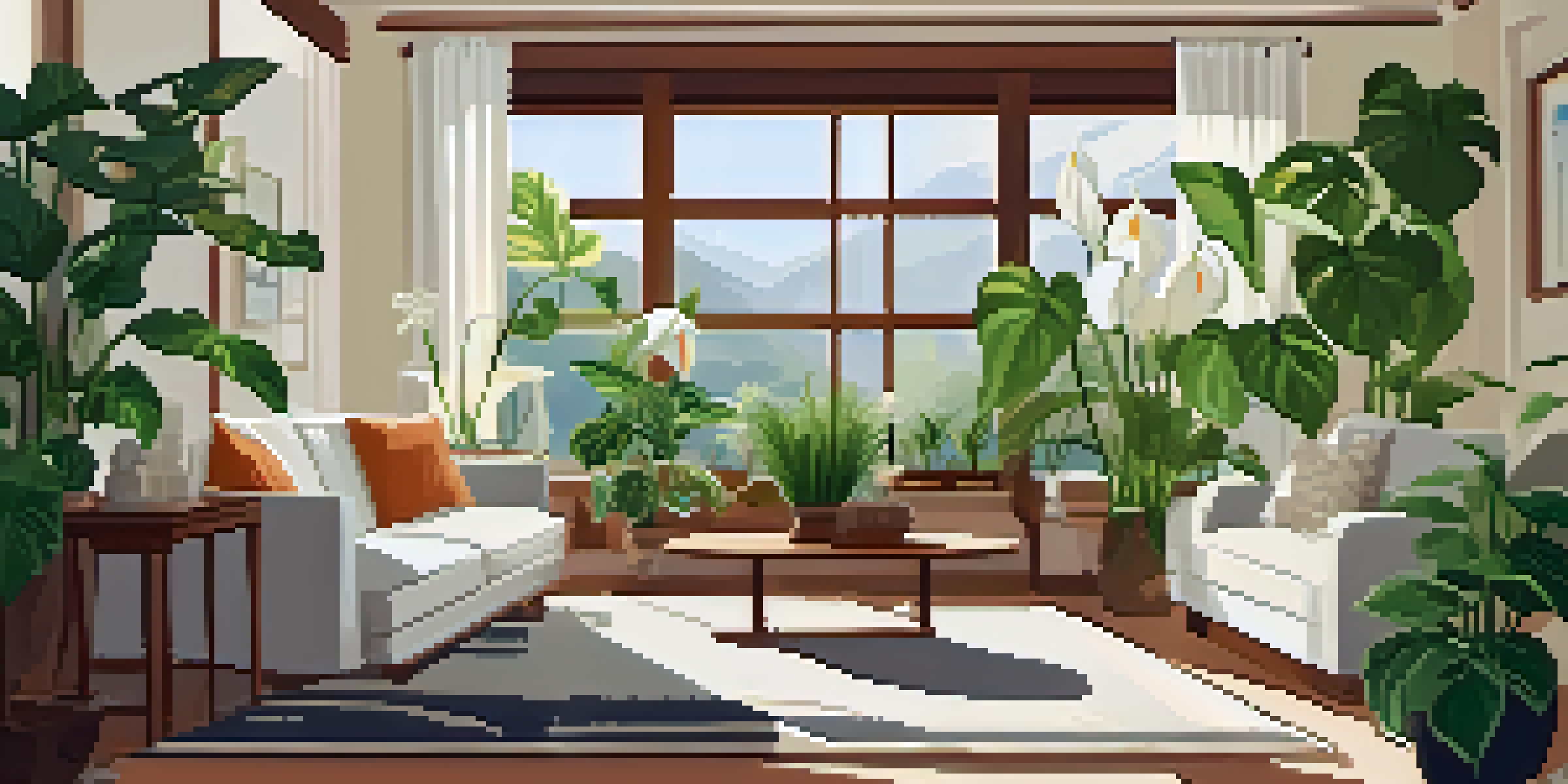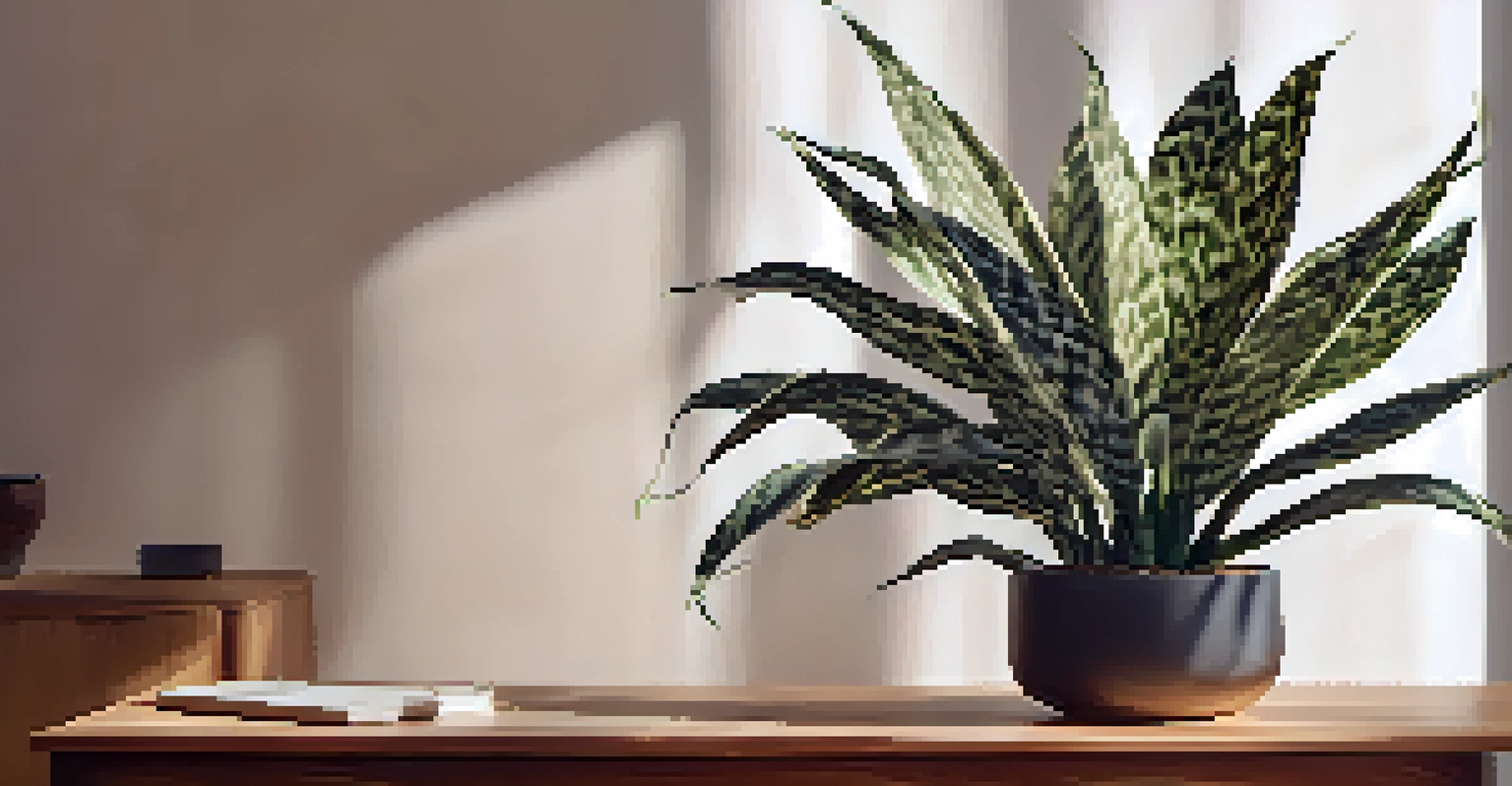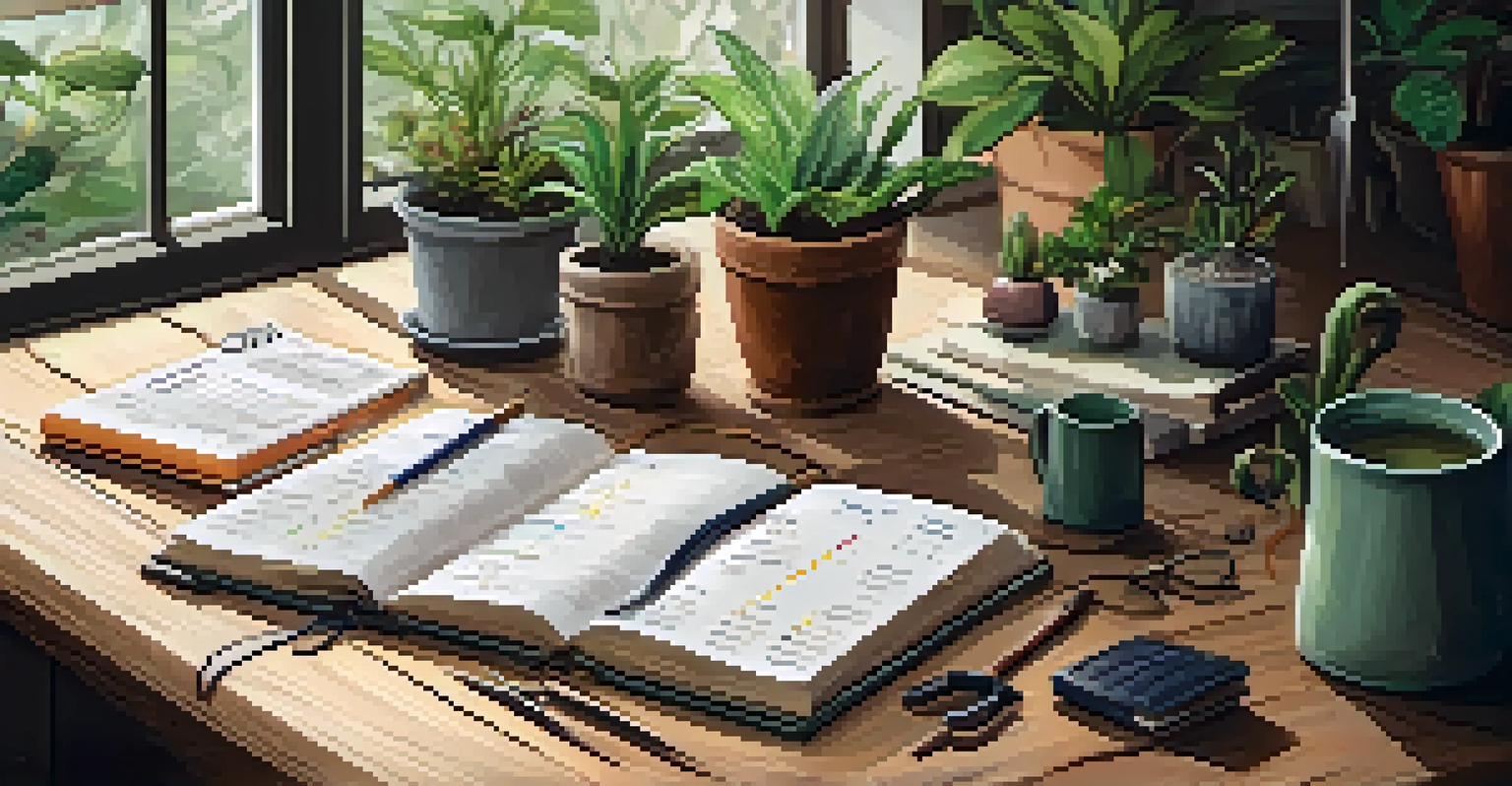Indoor Plants for Beginners: Choosing the Right Species for You

Understanding the Benefits of Indoor Plants
Indoor plants are not just decorative; they offer numerous benefits that can enhance your living space. They purify the air, improve humidity, and can even boost your mood. Imagine walking into your home and being greeted by the fresh, natural aroma of greenery—it's both calming and invigorating.
Plants give us oxygen for the lungs and for the soul.
Additionally, studies have shown that having indoor plants can increase productivity and creativity. Think of them as your little green companions, quietly working hard while you focus on your tasks. Just a few plants strategically placed can transform your environment into a more vibrant and inspiring space.
Moreover, taking care of plants can be a fulfilling hobby that helps reduce stress and promotes mindfulness. As you nurture them, you also cultivate patience and responsibility, creating a beautiful cycle of growth in both your plants and yourself.
Assessing Your Living Space for Plant Potential
Before you rush out to buy plants, take a moment to assess your living space. Consider factors such as light exposure, temperature, and humidity levels. For instance, if you have a bright, sunny window, you might be ready for sun-loving species like succulents or cacti.

On the other hand, if your space tends to be dim or cooler, don’t fret! There are plenty of beautiful plants, like snake plants or pothos, that thrive in lower light conditions. It’s all about finding the right fit for your environment—think of it as matchmaking between plants and their perfect homes.
Indoor Plants Boost Well-Being
Indoor plants not only enhance your home decor but also improve air quality, mood, and productivity.
Lastly, don’t forget to factor in your lifestyle. If you travel often or have a busy schedule, choose low-maintenance plants that can tolerate neglect. Understanding your space and lifestyle will help you avoid frustration and ensure your plant journey starts on the right foot.
Popular Indoor Plants for Beginners
As a beginner, it’s best to start with plants that are forgiving and easy to care for. One popular choice is the pothos, known for its trailing vines and ability to thrive in various lighting conditions. They are perfect for hanging baskets or shelves, adding a touch of greenery at different heights.
The love of gardening is a seed once sown that never dies.
Another great option is the peace lily, which features striking white blooms and can tolerate low light. They’re not only beautiful but also excellent at filtering indoor air pollutants. Picture having a plant that beautifies your space while also working hard to keep your air clean—it’s a win-win!
Lastly, consider the snake plant, which is nearly indestructible. With its upright leaves and unique patterns, it can survive in low light and requires very little water. It’s like the perfect plant roommate that doesn’t demand much but still makes a statement in your home.
Caring for Your Indoor Plants: The Basics
Once you've chosen your plants, understanding their basic care needs is essential. Most indoor plants require watering when the top inch of soil feels dry, but this can vary from species to species. Developing a watering routine can help you stay on track and keep your plants happy.
Lighting is another critical aspect of plant care. Pay attention to how much natural light your plants receive daily. If they’re not getting enough, you might notice yellowing leaves or stunted growth—indicators that they need to be relocated to a brighter spot.
Choose Plants for Your Space
Assessing your living space and lifestyle is crucial to selecting the right indoor plants that will thrive in your environment.
Finally, don't forget about fertilizing! Most indoor plants benefit from a balanced fertilizer during the growing season. Think of it as giving your plants a little nutritional boost, helping them grow strong and vibrant throughout the year.
Common Mistakes Beginners Make with Indoor Plants
Even seasoned plant parents can make mistakes, so don’t be too hard on yourself as you learn! One common error is overwatering, which can lead to root rot and other issues. Always check the moisture level before watering, and remember: it’s better to underwater than to overdo it.
Another mistake is placing plants in the wrong light conditions. Just because a plant looks beautiful in a particular spot doesn’t mean it will thrive there. Be observant of your plants; they often signal their needs through their appearance, like drooping leaves indicating they might need more light.
Finally, neglecting to repot your plants can stunt their growth. As plants grow, they need more space and nutrients. Keep an eye on your plant’s roots; if they’re coming out of the drainage holes, it might be time for a larger pot. Repotting can rejuvenate your plant and give it room to flourish.
Creating a Plant Care Schedule for Success
Establishing a care schedule can be a game-changer for any plant enthusiast. Start by marking a calendar with reminders for watering, fertilizing, and repotting. By staying organized, you’ll reduce the chances of neglecting your plants and ensure they receive the care they need.
You might also consider keeping a journal to track your plants’ growth and any changes in their health. This can help you identify patterns and adjust your care routine accordingly. Plus, it’s a wonderful way to see how your plants evolve over time—like a scrapbook of your plant journey!
Avoid Common Plant Care Mistakes
Being aware of common pitfalls, such as overwatering and improper lighting, can help beginners ensure their plants flourish.
Lastly, don’t hesitate to connect with other plant lovers. Joining online forums or local plant groups can provide you with valuable insights and support. Sharing experiences, tips, and even plant swaps can make your indoor gardening adventure even more enjoyable.
Resources for Further Learning About Indoor Plants
As you embark on your indoor plant journey, there are numerous resources available to help you along the way. Books like 'The House Plant Expert' by Dr. D.G. Hessayon offer comprehensive insights into various plant species and their care needs. It’s like having a knowledgeable mentor right on your bookshelf!
Online platforms, such as gardening blogs and YouTube channels, are also fantastic for visual learners. Watching planting techniques or care tutorials can provide clarity and inspire you to try new things. Plus, many plant enthusiasts love to share their personal experiences, making the learning process engaging and relatable.

Lastly, don’t overlook local nurseries and garden centers. The staff there often have a wealth of knowledge and can recommend plants based on your specific environment. They might even hold workshops or events where you can meet fellow plant lovers and learn together.